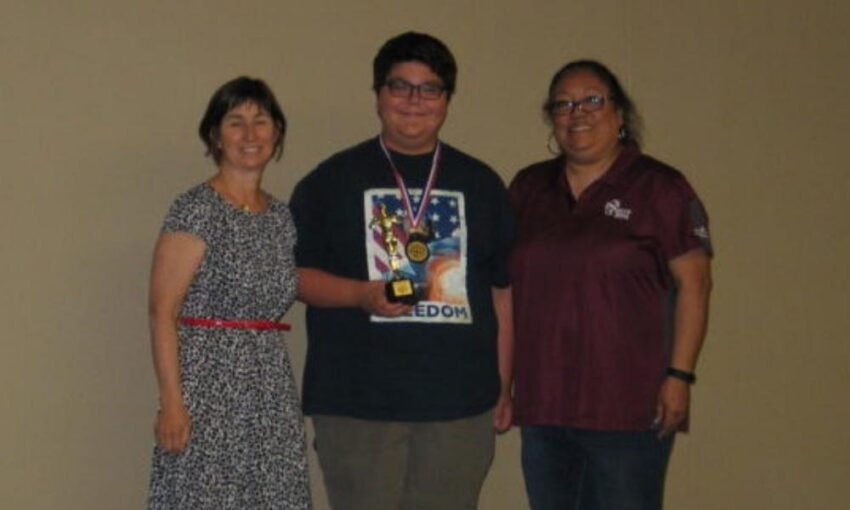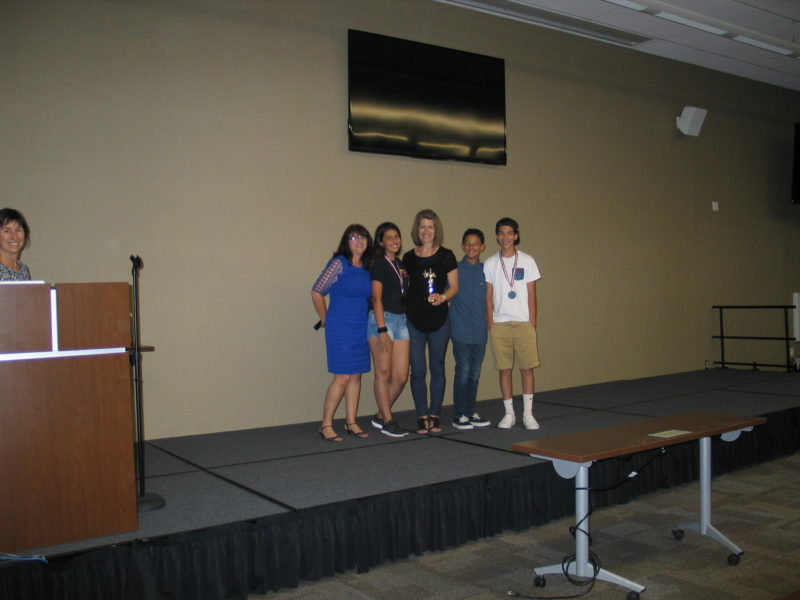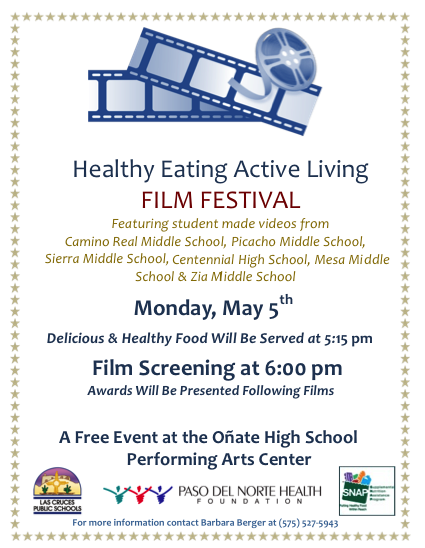
Share On Social!
Barbara Berger was more than concerned—she was downright worried about the growing weight and health of her students. The school dietitian in Las Cruces, NM (67.1% Latino population), found it hard to promote healthy eating and physical activity to her teenaged students.
That was, until she let students do it themselves in a way that would engage students in a fun, creative story-telling experience.
Through the use of creative films and videos, Berger found that the students were not only able
to help solve real-world health problems, they had fun and gained valuable life-skills while doing it.
Opening Credits: A Video Idea to Help Middle-Schoolers
Barbara Berger has been involved with health and nutrition education since 2012 for the Las Cruces Public School District.
Throughout this time, Berger has witnessed a staggering 34.8% obesity rate for Latino children (age 10-17) in New Mexico. Much of the issue stems from students having unhealthy diets.
Factors Which May Promote Latino Childhood Obesity
- High calorie, low nutrient food and beverages
- Lack of physical activity
- Sedentary behaviors
- Unhealthy sleep routines
“It’s so easy to do nutrition education with tasting lessons [with elementary students]—but with middle school it’s so hard to come up with something.” She struggled to find ways to push healthy eating to middle-schoolers.
Berger wanted to find a way to make health “cool” for her students.
She spoke with Patty Mars of the New Mexico Patty Morris, Ph.D., Director of the Department of Health’s Office of Nutrition and Physical Activity. Mars had used an engaging research strategy called “photovoice.” This technique has kids take photos and make observations to tell the important school and community stories.
Berger and Mars had an idea: Apply the photovoice technique to healthy eating for a class project for middle-school media students—but use videos instead of photos to better captivate student interests. Students would film how schools are promoting healthy eating and activity, and identify solutions or means of improvement.

“Media kids in middle school are learning how to make videos, and they might as well do it on our topic,” Berger said.
Finding Executive Producers
To make their idea happen, Berger and Mars needed funding for video equipment.
They sought grant funding.
They applied for a Healthy Eating Active Living (HEAL) grant and received about $40,000 to enable students to make 18 short videos focused on healthy lifestyles.
Goals of the HEAL Initiative:
- Encourage portion control and increase consumption of fruits and vegetables
- Increase physical activity and decrease sedentary behaviors
- Create an environment that promotes healthy eating and active living without bias against obesity
- Achieve long term sustainability for Paso Del Norte Institute and HEAL Initiative
Berger also sought additional funds for camera equipment and start-up costs from the Supplemental Nutrition Assistance Program Education (SNAP-Ed).
Directing a New Video Project
Berger and Mars worked hard on project logistics.
They decided videos would focus on the factors of everyday life that contribute to obesity. It would be up to the students themselves to create solutions to this problem in their school environment.
“It’s so good to have kids come up with solutions,” said Berger.
And as a reward for creating health focused short films, there would be a film festival held at the end of the year in which the students would compete for awards, but also showcase their work and share ideas behind a healthy lifestyle.
Berger and Mars next needed buy-in from media teachers to spearhead the video projects.

They recruited six teachers were recruited. Each got part of the HEAL grant money for equipment, as well as training in December 2012 to oversee the project and show students how to use the equipment.
“You know, that’s a good thing to have, bringing teachers together and doing a training, and then talk about what we’re looking for, and give them some background. Because they’re not experts in health—they’re media teachers,” Berger said. “It was nice to have a new perspective.”
Lights, Camera, Action!
In spring 2013, media teachers gave students an assignment: create a three- to five-minute video that examines policy and environmental barriers to healthy eating and active living in their school and community.
Videos also would show a student’s proposed solutions to barriers.
On May 6, 2013, the first-ever HEAL Film Festival took place and featured 12 films from the students who participated in Berger’s project.
Immediate Impact on Students, School Health
Berger explained how one 12-year-old student interviewed the manager of a local grocery store asking how they were promoting healthier eating in their stores.
Other students presented a video to their School Board to ask for salad bars. The presentation helped bring about salad bars in more than 40 schools throughout the district.

Due to the resounding success and continued interest in the program, Berger and the media teachers were able to get the media advocacy program into school curriculum.
Each year, students are assigned one project, out of a handful of topics, and one video per topic per class is entered into the annual film festival.
Despite funding from the HEAL grant having run out, the program is still going strong. The video equipment, as well as the teacher training, is handed down, enabling the program to operate with little cost.
HEAL Film Festivals happen each May. Participants watch the videos, listen to guest speakers on health and media issues, and eat healthy foods supported by SNAP-ED dollars.
“I wish everyone could see these [films],” Berger said. “It impacts the kids that work on them, their classes, their families and it’s nice, we’ve had some cool videos.”
If you’re looking to start a project like this in your area, let us know, and we’ll share with you some resources and advice for getting started.
See some students HEAL video samples here: https://www.youtube.com/playlist?list=PL8ykZn4ogw7J__OZvgdoW7DV_dJy3oZRY
By The Numbers
1
Supermarket
for every Latino neighborhood, compared to 3 for every non-Latino neighborhood
This success story was produced by Salud America! with support from the Robert Wood Johnson Foundation.
The stories are intended for educational and informative purposes. References to specific policymakers, individuals, schools, policies, or companies have been included solely to advance these purposes and do not constitute an endorsement, sponsorship, or recommendation. Stories are based on and told by real community members and are the opinions and views of the individuals whose stories are told. Organization and activities described were not supported by Salud America! or the Robert Wood Johnson Foundation and do not necessarily represent the views of Salud America! or the Robert Wood Johnson Foundation.



